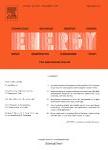版权所有:内蒙古大学图书馆 技术提供:维普资讯• 智图
内蒙古自治区呼和浩特市赛罕区大学西街235号 邮编: 010021

作者机构:Jilin Univ Sch Transportat Changchun 130022 Jilin Peoples R China Univ Alberta Dept Civil & Environm Engn Edmonton AB T6G 1H9 Canada
出 版 物:《ENERGY》 (能)
年 卷 期:2019年第169卷
页 面:797-818页
核心收录:
学科分类:0820[工学-石油与天然气工程] 08[工学] 0807[工学-动力工程及工程热物理]
基 金:National Natural Science Foundation of China China Scholarship Council
主 题:Electric vehicle Car-sharing system Charging infrastructure allocation Connected and automated vehicle (CAV) Multi-objective optimization model Hybrid parking mechanism
摘 要:The car-sharing system based on booming autonomous connected electric vehicles (ACEV-based car sharing system) has a large potential to significantly improve mobility, safety, and environmental friendliness of current transportation systems. However, the ACEV-based car-sharing system lacks comprehensive investigations which considering new emerging features. Also, it is constrained by inherent shortages of traditional car-sharing policies and various involved electric vehicle technologies, e.g., high-cost vehicle relocation, limited vehicle range and long recharge time. To address these problems, a general two-stage multi-objective optimization model is proposed, where it comprehensively formulates the emerging features and mitigates the inherent shortages. Two major goals are achieved, where the appropriated geographical service area is optimized in the first stage and the charging infrastructure allocation is efficiently processed in the second stage. In each stage, the multi-objective optimization model would simultaneously benefit both users and service providers. Also, a novel hybrid parking mechanism is proposed to compromise user flexibility and system management efficiency. The results demonstrate the effectiveness of the proposed method from multiple perspectives. (1) With appropriate estimations of a geographical service area and a reasonable ratio of vehicles to charging infrastructures, the proposed system can offer users efficient service qualities while maintaining a high vehicle usage frequency simultaneously. (2) Further, we find that the electric vehicle (EV) range, the charging speed, and the vehicle supply have a significant impact on the system. Especially, it noted that a fast charging speed gains a vital operation efficiency improvement. (3) In addition, more benefits are achieved when AV and CV technologies are adopted in the system. (4) Also, the adoption of ACEVs can almost reduce the overall CO2 emissions by 42.03% and energy consumption by